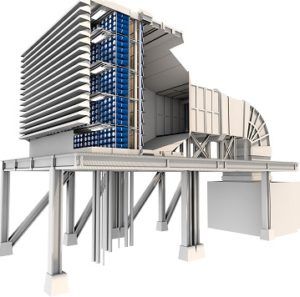How filter ratings can help choose better performers

Choice of gas turbine filtration depends a lot on the site operating conditions of the machine and environmental conditions. In terms of parameters, capture efficiency (Er), watertightness (W) and pulse recovery (P) are the three attributes that differ most from one filter to another. In combination they drive operating costs.
Filter rating scales can help to classify gas turbine filters based on the performance of the filter in each of the parameters. Using a baseline profile of the current filter, the owner can select replacement filters with stronger ratings on the properties that matter most under the new conditions. An Er|W|P profile provides an apples-to-apples comparison and enables a better match. Donaldson Company uses standardised testing to determine the Er|W|P on a 0 to 5-point scale for both the current filter as well as the proposed solution.
Here are two hypothetical case examples of a beneficial filter conversion using Er|W|P ratings:
Environmental IssueA plant in an agricultural region is coping with a dusty harvest season by using a pre-filter wrap on a depth-loading filter. The pre-filter and filter begin to quickly load and require frequent replacement. The owner discovers a rock quarry has reopened to the West, compounding a dust problem. Donaldson removes and tests the plant’s current filter, discovering it has medium-high capture efficiency (Er3); moderate watertightness (W2); and weak pulsability. (P1). The trouble becomes apparent: The existing filter’s limited pulse recovery rate (P1) cannot keep pace with the high dust load. Using this comparative information, a filter with rating Er3|W1|P5 would be an ideal replacement. No watertightness is is required in the filter, but it has to deliver the highest possible pulse recovery rate (P5) to shed the heavy dust load. With this change, the plant runs continuously through high dust occurrences and projects a short return-on-investment.
Operational ChangeA peaking plant running 1,500 hours per year on demand needs to convert to a baseload system that can run 8,000 hours. Since downtime becomes a new concern, water washing is no longer an option to optimize compressor efficiency. Compressor health and stable power output become the plant’s main management concerns—and the answer is a different kind of inlet air filter. In a consultation, Donaldson removes and tests the original synthetic filter and finds that it provides medium-high efficiency (Er3), minimal watertightness(W1), and maximum pulsability (P5). Switching to a filter rated Er5|W5|P1—providing greater efficiency and watertightness, with less emphasis on pulsability -- would boost filter performance. This recommendation enables the plant to minimize downtime and maximize power output.
Donaldson is in discussion with other filtration suppliers to make the Er|W|P system an industry standard. The prevailing rating scale has focused only on MERV, EN, or ISO efficiency ratings. A white paper outlining rationale for a more-comprehensive Er|W|P system is available here.
Jason Tiffany is Product Development Team Lead in the Gas Turbine Systems (GTS) division of Donaldson Company. He has been a manufacturing and product development engineer for 12 years and holds a Master’s degree in Engineering Management.